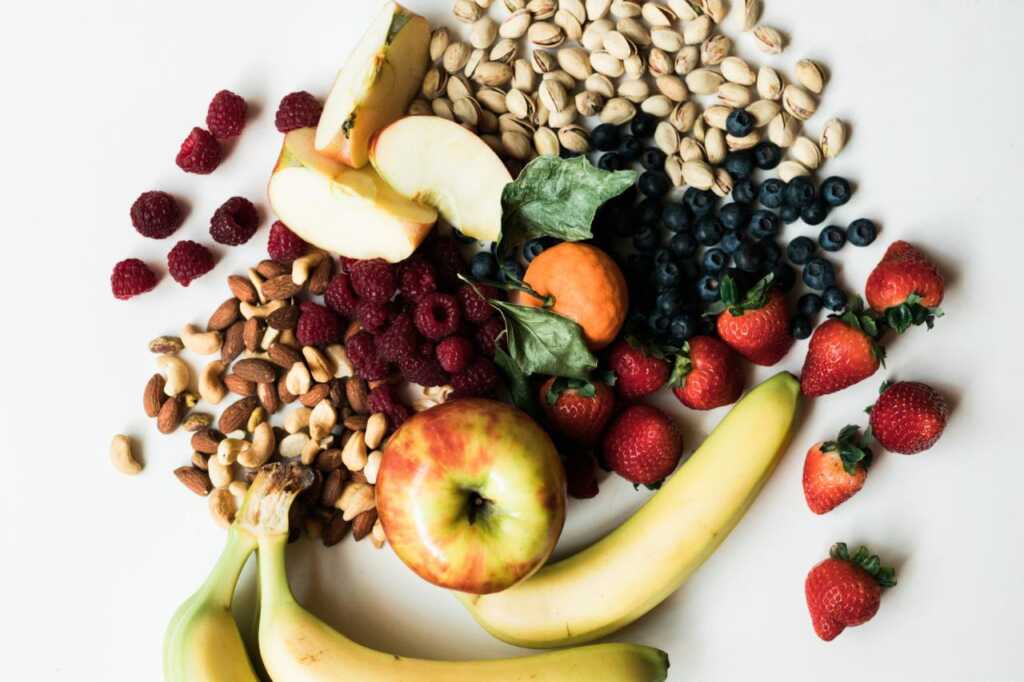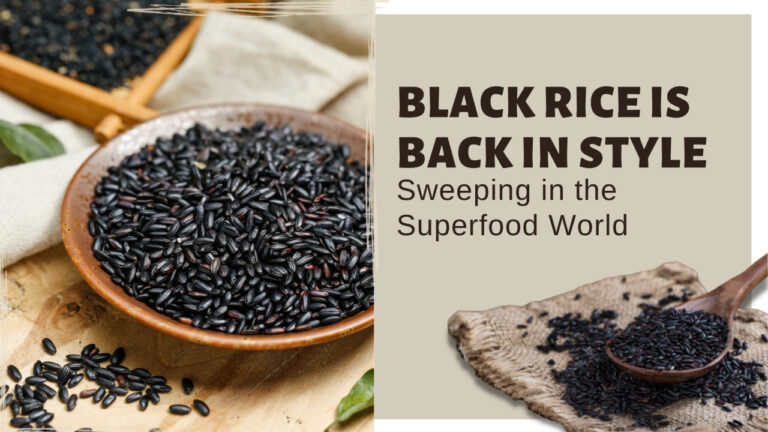Every food has a distinct post-digestive effect. After being digested, sattvic foods typically leave you feeling pleased, joyful, and alive. They are usually sweet, fresh, light, nutritious, and aromatic. Sattvic meals maintain a lean, healthy physique and a clear, focused mind. The term “sattvic diet,” which translates to “moderation in eating,” is one of the treatments suggested in Ayurvedic literature.
The Sattvic Diet also referred to as the ‘Yogic Diet’ and ‘Lacto-vegetarian Diet’ is primarily plant-based and emphasizes organic, whole, natural fruits, vegetables, beans, nuts, seeds, and grains that are grown in harmony with nature. It also includes all dairy products and honey and forgoes other foods like onions, garlic, and some pulses. sattvic diet is the best Ayurvedic approach for healing physical and mental health issues.
Strict Sattvic Diet Guidelines
A healthy lifestyle includes sattvic eating practice. Combining it with practicing yoga and medication is to enhance the effectiveness.
- The sattvic diet places a strong emphasis on using only natural, unadulterated products, and chemical-free items.
- Sattvic food should not be stored in the refrigerator or eaten later since it should be consumed immediately after cooking.
- The Sattvic diet chart prohibits individuals from varying the time at which they consume meals.
- Fod According to Ayurveda, the body requires at least two hours to digest food, so one must eat it at the same time every day.
- Ayurveda states that it takes meals at least two hours to digest. Therefore, it is advised to eat before engaging in two hours of yoga practice and sleeping.
- Consuming beverages with alcohol and caffeine, such as tea, coffee, cigarettes, and artificial sweeteners, is not recommended for those who follow the Sattvic diet.
- Sattvic eating comprises fasting one day a week, either removing foods and liquids or simply containing fruits or juice.
- Adhering to the Sattvic Diet plan involves more than just eating certain foods; it also emphasizes avoiding negative thinking. The greatest method to avoid having such ideas is to practice yoga, meditation, and physical activity.

With the Sattvic Diet, it’s all About the Food
As a rule of thumb, sattvic foods are freshly prepared, raw/uncooked, or minimally cooked.
Sprouted whole grains – barley, amaranth, bulgur, barley, millet, quinoa, wild rice, etc.
Whole grains – whole grain bread, brown rice, etc
Fresh fruit – apples, bananas, pears, oranges, etc
Land and sea vegetables – spinach, broccoli, cauliflower, peas, carrots, asparagus, etc
Pure fruit juices – apple juice, mango juice, etc
Legumes – chickpeas, peanuts, black beans, kidney beans
Nuts – almonds, walnuts, pistachios, hazelnuts, cashews
Seeds – chia seeds, flax seeds, pumpkin seeds, sunflower seeds
Dairy – milk, yogurt, cheese, vegan milk like almond milk, coconut milk, oat milk (not soy)
Fats and oils– olive oil, sesame oil, red palm oil, flax oil, ghee, etc
Sattvic spices and herbs– basil, nutmeg, cumin, ginger, coriander, etc
Sweeteners– honey and jaggery
Foods to Avoid
Added sugar and sweets: white sugar, high fructose corn syrup, candy, soda, etc.
Fried foods: french fries, fried pastries, etc.
Refined grain products: white bread, bagels, cakes, etc
Fast, processed, and frozen foods: chips, sugary breakfast cereals, fast food, frozen dinners, microwave meals, etc.
Certain vegetables and fruits: onion, garlic, and pickles
Meat, fish and eggs, and poultry: chicken, beef, lamb, egg whites, salmon, tuna, cod, etc
Particular beverages: tea, coffee, alcohol, sugary drinks
Leftovers or previously prepared food
Salty and sour foods

How does the Sattvic diet Support the Harmony of Mind and Body Health?
Because it consists primarily of whole, nutritious foods and is low in processed products, the meals consumed on this diet have several positive health effects.
1. Can Reduced Chance of Chronic Illness
- Lower risk of type 2 diabetes due to the consumption of low-glycemic foods such as whole grains, legumes, and nuts. These maintain stable blood sugar levels.
- Lower blood pressure, mostly as a result of vegetarians’ lower BMIs. They are lower in sodium and fat, which may also be beneficial.
- A lower risk of heart disease due to the body’s lower cholesterol levels.
2. Can Aid in Weight Loss
Studies have demonstrated that higher fiber vegetarian diets, such as the Sattvic diet, promote weight loss by lowering body mass indices when compared to non-vegetarian diets. Consuming more fiber than other foods can assist in weight loss, resulting in a reduction in overall caloric intake.
Research has proven that soluble fiber, present in all fruits, vegetables, whole grains, and legumes, aids in weight loss. Some foods, such as black beans, flax seeds, and avocados, are particularly high in soluble fiber.
3. Uptick in mood
An interconnected network of communication between the gut and the brain is known as the gut-brain axis. This has an effect on the hypothalamic-pituitary-adrenal (HPA) axis, the autonomic nervous system, and gut nerves.
Our hormones, emotions, mood, mental health, and cognitive abilities are all influenced by the foods we eat. A sattvic diet links to a lower risk of depression, improves mood, and brings clarity and lightness to the mind.
4. Enhances energy
Low glycemic index foods tend to slow down the body’s energy supply, which controls blood sugar levels. These meals certainly help to balance the release of energy from foods, reducing blood sugar increases and minimizing an energy slump after a big meal.
5. Strengthens the immune system and boosts the digestive system
This diet is very nutrient-dense because raw fruits and vegetables account for 40% of the diet. All the essential nutrients, dietary fiber, antioxidants, proteins, minerals, and monounsaturated fats are provided by eating natural, fresh foods. Constant commitment to this diet improves immunity and results in a stronger immune system. Due to high fiber content digestion improves.
Contradiction with the Sattvic Diet
Even though the Sattvic diet has numerous advantages, there may also be some cons. Although Ayurvedic beliefs inspire the tenets of the Sattvic diet, scientific research does not always substantiate them. Some of the limitations are therefore probably not necessary.
1. Cuts Out some Healthy Foods
Despite the Sattvic diet’s abundance of nutrient-dense foods, it excludes a handful of nutritious ones. The Sattvic diet advises people to stay away from foods like meat, chicken, fish, and eggs, which are all great sources of complete protein, healthy fats, and a range of micronutrients.
Even some healthful veggies are off-limits, including peppers, radishes, onions, mushrooms, and garlic. The Sattvic diet forbids the consumption of alcohol, caffeine-containing tea, and coffee, which may make it challenging for some people to stick to this eating regimen.
Although rajasic or tamasic foods have health benefits, people following a sattvic diet typically avoid them.
2. Can be protein-deficient
Fewer high-protein foods are readily available because eating meat, dairy, fish, poultry, and eggs are discouraged. Practically speaking, dairy, beans, and legumes are the highest-protein food groups one can eat. There is some protein in foods like nuts, seeds, and whole grains, although the amounts are often small. To achieve your protein needs, you’ll need to center a significant portion of your meals around these plant sources.
3. Missing Essential Vitamins
There are some vitamins and minerals that vegetarians usually lack because of their vegetarian diet. These include-
- Vitamin B12
This is essential for maintaining a healthy neurological system and assisting in the formation of red blood cells. Only animal products, including dairy and eggs, contain it. If you don’t consume any animal-derived products, you might need to take a vitamin B12 supplement.
- Iron
Hemoglobin, a protein that carries oxygen in the blood, depends on iron for proper operation. Within the body, it also plays several other roles.
Haem iron (found in meat) is preferred over non-haem iron because it is more easily absorbed by the body.
Chickpeas, lentils, kidney beans, and other pulses, tofu, green leafy vegetables (kale, cabbage, broccoli), seeds and nuts (almonds and cashews), dried apricots, dates, and raisins are among the sattvic-approved foods that contain plant iron.
- Omega-3 Fats
A crucial polyunsaturated fat and nutrient that the majority of people don’t consume enough of are omega-3 fatty acids. The body cannot produce them, so you must obtain them through your diet.
Vegetarian sources of omega-3 fatty acids are available, although they usually fall short of those found in oily fish. This is so that oily fish can deliver the majority of the health advantages of omega-3 fats, which are two forms of omega-3 fats called DHA and EPA.
ALA, an omega-3 lipid found in plant sources, has fewer perks. As a result, you might require a supplement.
However, plant-based vegetarian sources of omega-3 fats such as soybeans, walnuts, flax seeds, and chia seeds are also available.

What Are the Three Food Types?
Foods are divided into three categories in Ayurveda based on how they affect the body and soul.
- Sattvic Foods – Non-Stimulating Food
According to Ayurveda, the simplest diet is best for the body and mind. This is why a sattvic diet is recommended and most followed by the people who practice yoga.
- Rajasic Foods – Stimulant Foods
Rajasic is too spicy, sour, and salty.
This kind of foodstuff provides short-term instant energy. Certain foods slowly harm the digestive tract. This saps our body’s energy and causes stress, lethargy, and rage.
- Tamasic Foods – Sedative Foods
Tamasic, on the other hand, is oily, musty, heavy, and overheated. They are either canned or preserved.
This type of food makes a person lethargic, dull, unproductive, careless, and incompetent.
If you’re curious to know more about how eating sattvic, Rajasic, and Tamasic foods affect the mind, body, and emotions, check out this post — We are What We Eat – What is Sattvic, Rajasic, Tamasic Food in Ayurveda – Wholesome Ayurveda
Would you consider trying a sattvic diet? Sattvic diet is based on ancient philosophy. The Sattvic diet is very restrictive for today’s day and age, even though it contains a lot of nutritious foods and might have some health advantages. When used in conjunction with traditional medication and a healthy lifestyle, it can be useful. Do you believe that given the constraints listed above, this diet is as healthy as it claims to be?
However, making healthy food choices every day is still very vital. But you may always start small and choose more Sattvic food choices each day. You’ll eventually find it effortless to make healthier decisions since your body will urge you to do so.
References
Healthline. (2020). Sattvic Diet Review: What It Is, Food Lists, and Menu. [online] Available at: https://www.healthline.com/nutrition/sattvic-diet-review.
Johnson, A. (2022). 5 Day Sattvic Diet Meal Plan (PDF & Menu). [online] Medmunch. Available at: https://medmunch.com/sattvic-diet-meal-plan/.



Sattvic Diet: Spiritual Nourishment